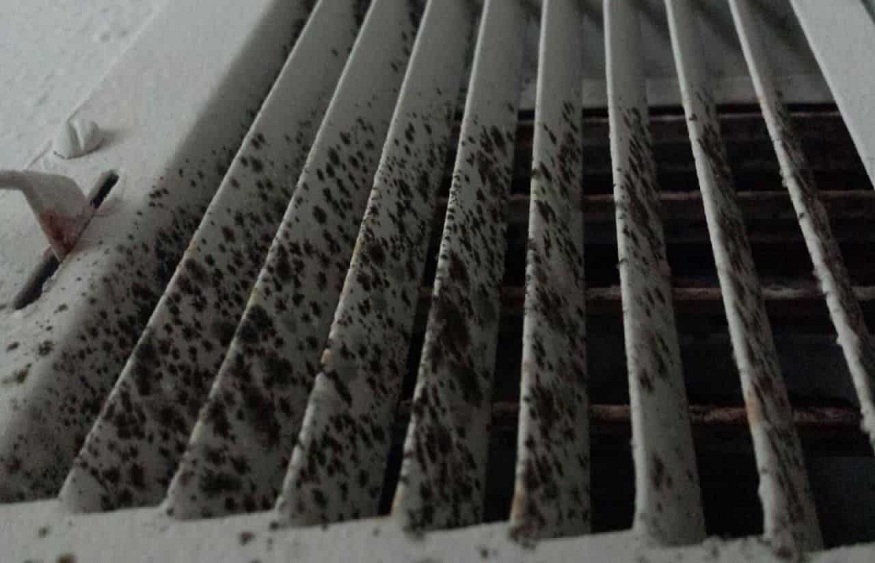
What Are The Signs Of Mold In Air Ducts?
Identifying the presence of mold in air ducts is vital for every home. Mold growth not only poses health risks but can also lead to structural damage and costly repairs if left unaddressed. Mold can weaken the integrity of the ductwork, compromising its efficiency and potentially causing air leaks. Moreover, mold spores can spread through the HVAC system, contaminating other areas of the home and exacerbating the problem. By identifying mold presence early on, homeowners can take immediate action to mitigate the risks, prevent further damage, and ensure a safe and healthy living environment for themselves and their families.
Unusual Odors and Musty Smells
Distinct Odors
Distinct odors emanating from the air vents can serve as key indicators of mold presence in the ducts. Pay attention to any unusual smells, especially musty or damp odors that persist throughout the house. These odors often hint at mold growth within the air ducts, suggesting the need for further investigation and prompt action to address the issue effectively.
Cconnection Between Mold Growth And Musty Smells in the Ducts
Understanding the connection between mold growth and musty smells in the air ducts is crucial for homeowners. Mold releases volatile organic compounds (VOCs) that contribute to the characteristic musty odor. When mold colonies thrive in the ductwork, these odors can permeate the air vents, spreading throughout the home. Recognizing this link emphasizes the significance of addressing mold growth to maintain a healthy indoor environment.
Visible Mold Growth
Inspecting Air Ducts
Inspecting the air ducts’ interior surfaces is a fundamental step in identifying visible mold patches. Carefully examine the ductwork for any signs of mold growth, such as dark spots, discoloration, or fuzzy patches. Prompt detection and intervention are essential to prevent further mold spread and associated health risks.
Different Colors and Textures of Mold Growth
Mold can manifest in various colors and textures, providing further clues to its presence in the air ducts. It may appear as black, green, brown, or even white growth, and can exhibit textures ranging from powdery to slimy. Recognizing these different colors and textures aids in identifying the specific type of mold and informs the appropriate remediation measures to be taken.
Allergic Reactions and Respiratory Issues
Increased Allergy Symptoms and Respiratory Discomfort
Pay attention to any escalation in allergy symptoms or respiratory discomfort when using the HVAC system. If you notice a sudden onset of sneezing, coughing, congestion, or difficulty breathing, it could be an indication of mold presence in the air ducts. These symptoms arise due to exposure to mold spores circulating through the ductwork, emphasizing the need for investigation and remediation to protect respiratory health.
Mold Spores and Respiratory Health Concerns
Understanding the link between mold spores in air ducts and respiratory health is crucial. Mold spores are tiny particles released by mold colonies, and when inhaled, they can trigger or worsen respiratory issues, especially in individuals with allergies or asthma. The presence of mold in the air ducts means that these spores can be easily distributed throughout the home, posing a risk to occupants’ respiratory well-being.
Water Damage and Moisture Issues
Signs of Water Damage around Air Ducts
Identifying signs of water damage around the air ducts is an important indicator of potential mold growth. Look for stains, discoloration, or dampness in the vicinity of the ductwork. These signs suggest a moisture issue that can create an environment conducive to mold development. Addressing water damage promptly is essential to prevent mold growth and its associated health risks.
Moisture Issues and Mold Growth
Recognizing the connection between moisture issues and mold growth in ductwork is crucial. Excessive moisture, whether from leaks, condensation, or high humidity, provides the perfect breeding ground for mold. Damp conditions within the air ducts can lead to mold spores settling and proliferating, compromising indoor air quality. Addressing underlying moisture issues is essential to prevent mold growth and maintain a healthy environment within the home.
Inefficient HVAC System Performance
Reduced Airflow, Poor Temperature Control, and Increased Energy Consumption
When you notice a decrease in airflow, difficulty maintaining desired temperatures, or a spike in energy consumption, it could indicate mold presence in the air ducts. Mold growth can obstruct airflow, hindering the HVAC system’s efficiency and causing it to work harder to achieve desired temperature levels. This inefficiency not only compromises comfort but also leads to increased energy costs.
Impact of Mold on HVAC System Efficiency and Performance
Understanding how mold presence in air ducts affects the efficiency and performance of the HVAC system is crucial. Mold growth creates blockages and buildup within the ductwork, reducing airflow and impeding heat transfer. As a result, the system struggles to distribute conditioned air effectively, leading to inconsistent temperature control and increased strain on the equipment. Addressing mold in the air ducts is essential to restore optimal HVAC system performance and efficiency.
In conclusion, detecting mold presence in air ducts is vital for maintaining a safe and healthy home environment. By recognizing the key indicators such as musty odors, visible mold growth, and respiratory symptoms, homeowners can take swift action to address the issue. Understanding the impact of mold on HVAC system performance, including reduced airflow and increased energy consumption, underscores the importance of timely remediation. Additionally, addressing water damage and moisture issues can prevent mold growth in the ductwork. By prioritizing regular inspections and prompt intervention, homeowners can ensure optimal HVAC system efficiency, protect respiratory health, and safeguard their overall well-being.
Publisher’s Details:
United Home Services
1582 Lost Creek Dr, Allen, TX 75002, United States
(972) 850-3093
unitedhomeservices.com
[email protected]
When it comes to maintaining a healthy home, detecting mold presence in air ducts is crucial. Regular air duct maintenance plays a significant role in preventing mold growth and ensuring clean indoor air. United Home Services provides air duct cleaning services, offering the best solutions to eliminate mold and improve air quality. Don’t compromise on the safety of your home environment. Trust the professionals at United Home Services for top-notch air duct cleaning services in Allen, TX.


